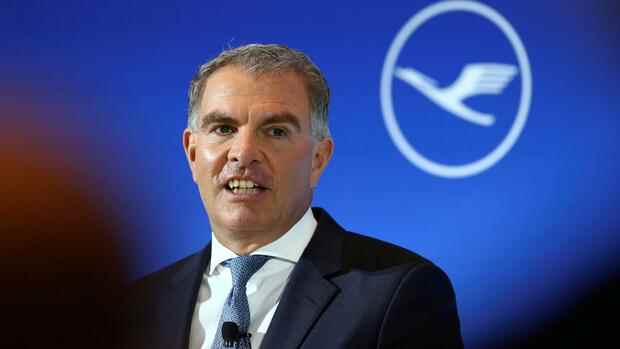The head of Lufthansa can look forward to the independence of the airline group that has been regained.
(Photo: Reuters)
Frankfurt Lufthansa has paid off the last remaining state aid from the federal government. The company announced on Friday that the so-called silent contribution II was repaid in full in the amount of one billion euros. This means that CEO Carsten Spohr has achieved an important goal faster than many expected. He had recently stated several times that he would redeem the remaining aid funds by the end of the year.
The early repayment was possible, among other things, because Lufthansa succeeded a few days ago in securing another 1.5 billion euros on the capital market with another bond. There is also a clearly growing core business. After the opening of the USA – a very important market for Lufthansa – many customers want to catch up on trips that they have not been able to take for almost two years due to strict entry restrictions in the states.
The result: All in all, Europe’s larger airline group is doing much better again. In the third quarter, sales doubled compared to the same period of the previous year to 5.2 billion euros. Adjusted operating earnings before interest and taxes (EBIT) were positive again at EUR 255 million, after having been minus EUR 1.2 billion a year ago.
For comparison: The British-Spanish rival IAG (British Airways, Iberia, Aer Lingus, Vueling) had to report an operating loss of 452 million euros for the third quarter. All of this strengthens the confidence in the Lufthansa management.
Top jobs of the day
Find the best jobs now and
be notified by email.
CEO Spohr had repeatedly emphasized that he would rather be in debt to the capital market than to taxpayers. This is important for management. Because once the aid has been paid back, the shackles in the group are loosened. Lufthansa could now, for example, make major acquisitions again, even if these are at least not currently planned.
The company is also allowed to pay dividends to joint venture partners again. And bonuses are allowed to flow to management and executives again. Many Lufthansa employees have planned their variable remuneration for their old-age provision and are frustrated because the funds are lacking. This has caused severe bloodletting in individual departments.
The federal government will exit in five months at the earliest
Lufthansa was hit early and severely by the pandemic. The German state, together with Switzerland, Belgium and Austria, had to help Lufthansa with up to nine billion euros. At no point did the airline group draw more than four billion euros from this. At the same time, the federal government had invested 20 percent in “Hansa” through the Economic Stabilization Fund (WSF).
Since the capital increase a few weeks ago, this share has fallen to 14.09 percent. The WSF has made it clear that it intends to dispose of these shares in the medium term. This is possible in around five months at the earliest, but must be completed no later than 24 months after the capital increase that took place in September. According to the framework agreement with the WSF, the sale can take place in several steps, for example by delivering the shares to existing shareholders via subscription offers or a private placement to “qualified investors”.
If the WSF does not exit by the deadline, Lufthansa would have a so-called exit entitlement. The group can then name investors willing to buy to the WSF and demand that they take over the shares at the minimum price. But that is rather unlikely. Investor interest in the airline group has recently increased – mainly due to the opening of the US market. The MDax value has recovered from the twelve-month low of 5.47 euros and was recently quoted at almost seven euros.
The rating agency S&P has raised the outlook for Lufthansa from “negative” to “stable” due to the better outlook. For Alex Irving from Bernstein Research, Lufthansa is one of the three “outperformers” in the European industry – with the biggest “transformation story”.
More: 177 new jets: This is what the new Lufthansa fleet looks like – and it flies on these routes
